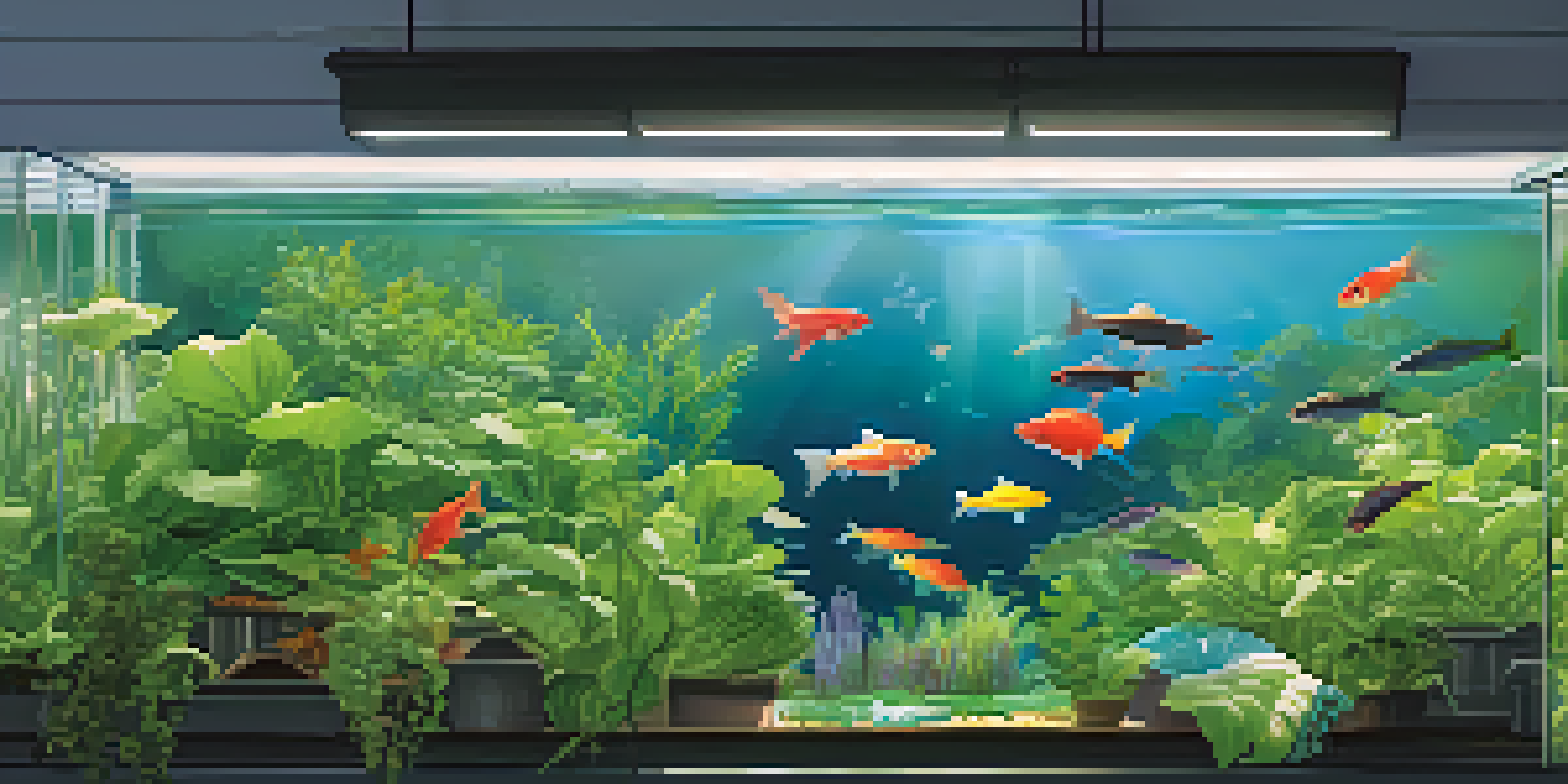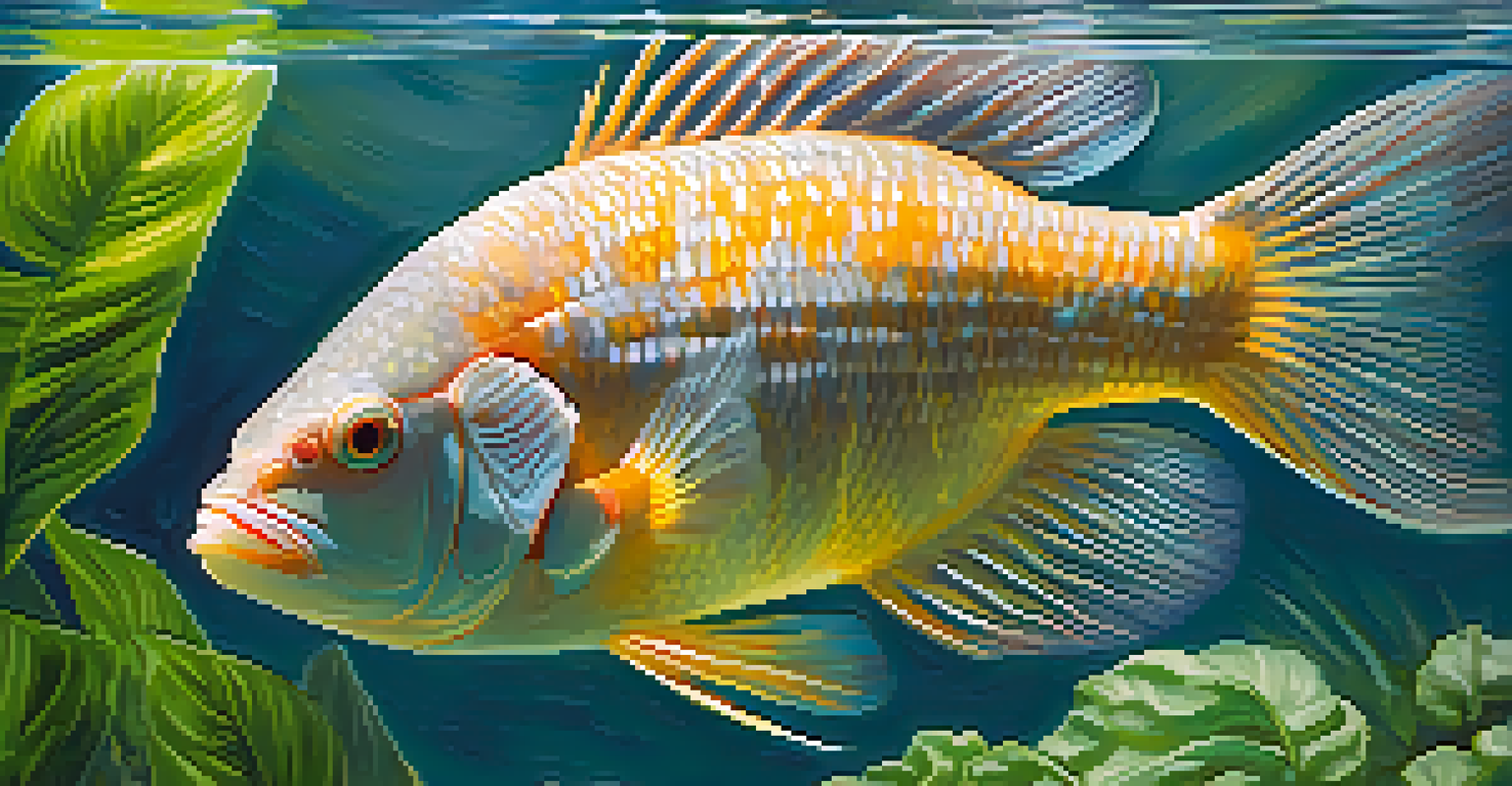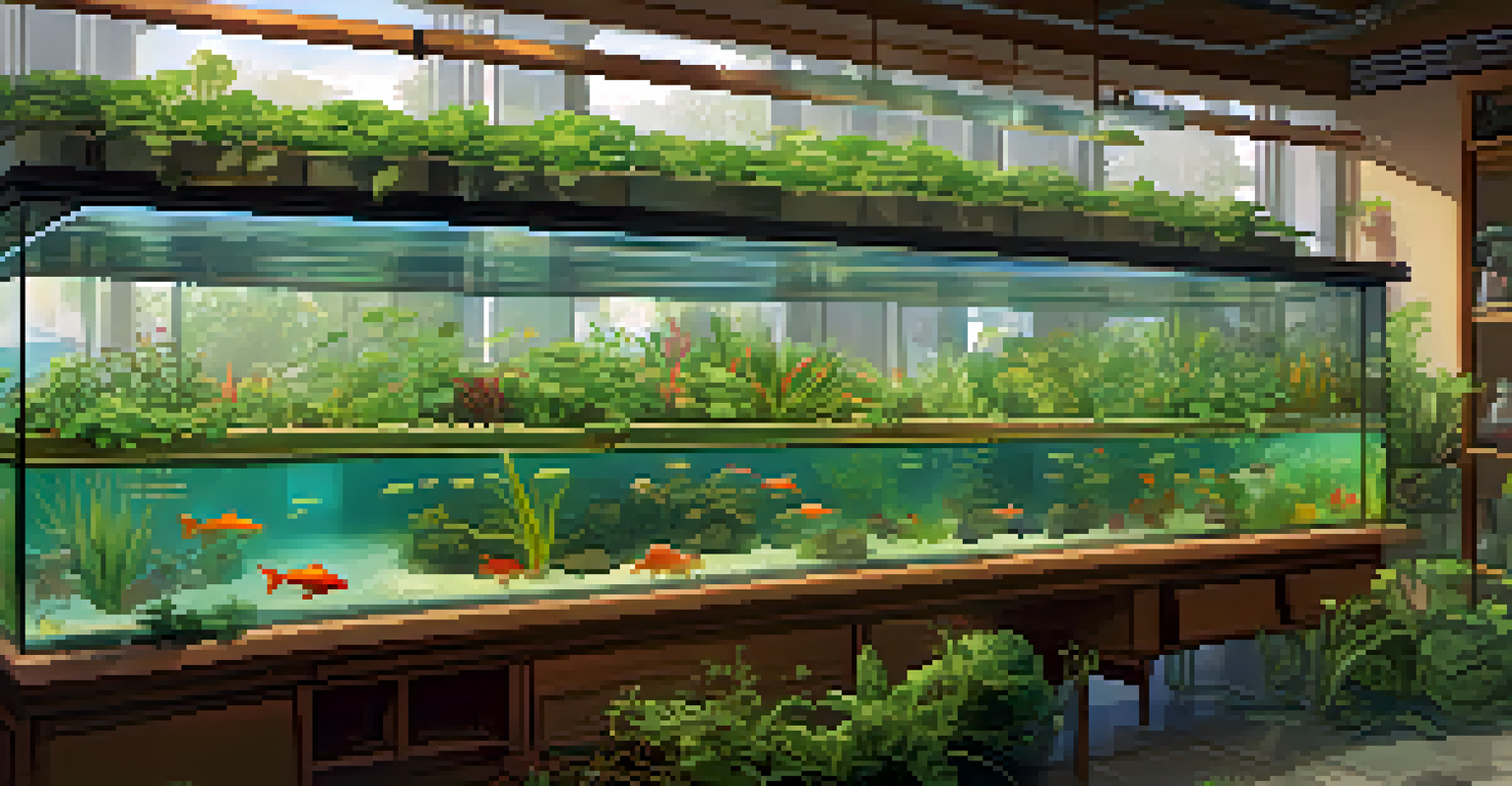Choosing the Right Fish for Your Aquaponics System

Understanding Aquaponics Basics and Fish Role
Aquaponics is a sustainable method combining aquaculture and hydroponics. In this system, fish waste provides nutrients for plants, while plants filter and clean the water for the fish. Understanding this relationship helps you realize why choosing the right fish is crucial for success.
Aquaponics is an innovative way to grow plants and fish together in a symbiotic environment.
Different fish species produce varying amounts of waste, impacting nutrient levels in your system. For instance, goldfish are hardy and produce a decent waste level, while tilapia are popular due to their fast growth and adaptability. The key is to find a balance between fish health and plant nutrient needs.
Ultimately, the right fish not only supports plant growth but also contributes to the overall balance of your aquaponics ecosystem. This foundational understanding is your first step in making an informed choice.
Factors to Consider When Choosing Fish
When selecting fish for your aquaponics system, consider factors like water temperature, pH levels, and space requirements. Each fish species has its specific needs, which can influence your overall system design. For example, tilapia thrive in warmer waters, while trout prefer cooler environments.

Additionally, consider the growth rate of the fish species you choose. Fast-growing fish like tilapia can offer quicker returns on your investment, while slower-growing options may require more patience but can be just as rewarding. Be sure to match your fish choice with your system's capabilities.
Choose the Right Fish Species
Selecting fish that match your aquaponics system's conditions is crucial for ensuring both plant health and fish vitality.
Lastly, think about the fish's compatibility with plants in your system. Some fish are more prone to disease or stress, which can impact plant health. Researching these factors can help you build a robust and harmonious aquaponics environment.
Popular Fish Choices for Aquaponics Systems
Tilapia often tops the list for aquaponics, thanks to their adaptability and rapid growth. They can thrive in a range of water conditions and are generally hardy, making them a favorite among beginners. Their mild flavor also makes them appealing for culinary uses.
The best way to predict the future is to create it.
Catfish is another solid option, known for their resilience and ability to tolerate lower oxygen levels. They are bottom feeders, which means they can help keep your system clean. Plus, they can grow quite large, providing a hefty harvest if you're looking to produce food.
For those in cooler climates, trout is a fantastic choice. They prefer cooler water temperatures and can be a bit more challenging to raise, but the reward is worth it. Their delicious taste and high market value make them a popular selection for aquaponics enthusiasts.
Assessing Local Regulations and Sustainability
Before diving into fish selection, check local regulations regarding fish farming. Some regions have specific guidelines on which species can be raised, especially if they are non-native. Ensuring compliance is essential for both legal and environmental reasons.
Sustainability is another important factor. Consider sourcing fish that are responsibly farmed and environmentally friendly. Choosing local species can reduce the risk of introducing invasive species and support your local ecosystem.
Consider Regulations and Sustainability
It's important to check local fish farming regulations and prioritize sustainability to protect the environment and support local ecosystems.
By taking these regulations and sustainability practices into account, you not only create a thriving aquaponics system but also contribute positively to your community and the environment.
Integrating Fish and Plant Compatibility
The relationship between the fish and plants in your aquaponics system is vital. Certain fish produce waste that is more beneficial for specific plants, enhancing their growth. For example, leafy greens often thrive with fish that produce high nitrogen levels.
Consider companion planting as well. Some plants can help deter pests or attract beneficial insects, creating a more balanced ecosystem. By strategically pairing fish and plants, you can maximize growth and minimize pests.
This integration fosters a harmonious environment where both fish and plants can thrive together, ultimately leading to a more productive aquaponics system.
Maintaining a Healthy Fish Population
Once you've chosen your fish, maintaining their health is crucial for your aquaponics success. Regularly monitoring water quality, including ammonia and nitrate levels, helps ensure a stable environment. Healthy fish will produce more waste, benefiting your plants.
Feeding your fish a balanced diet tailored to their species will promote growth and vitality. Overfeeding can lead to excess waste and pollution, so it's essential to find the right balance. Proper nutrition contributes to their overall health and enhances their role in your system.
Monitor and Adjust Your System
Regularly evaluate the health of your fish and plants, adjusting your practices as necessary to optimize the balance in your aquaponics system.
Lastly, observe your fish for any signs of stress or disease. Early detection of issues allows for prompt action, preventing potential losses and maintaining the health of your aquaponics system.
Evaluating Your Success and Making Adjustments
As your aquaponics system matures, regularly evaluating its success is vital. Monitor plant growth, fish health, and overall system balance. Are your plants thriving, and are your fish exhibiting healthy behaviors? These indicators will help you gauge your system's performance.
Be open to making adjustments as needed. If certain fish species aren’t thriving, it may be time to reassess their compatibility with your plants and system conditions. Adapting your approach based on observations can lead to better outcomes.

Remember, aquaponics is a learning journey. Each system is unique, and the more you understand about your specific setup, the more successful you will be in nurturing both fish and plants.